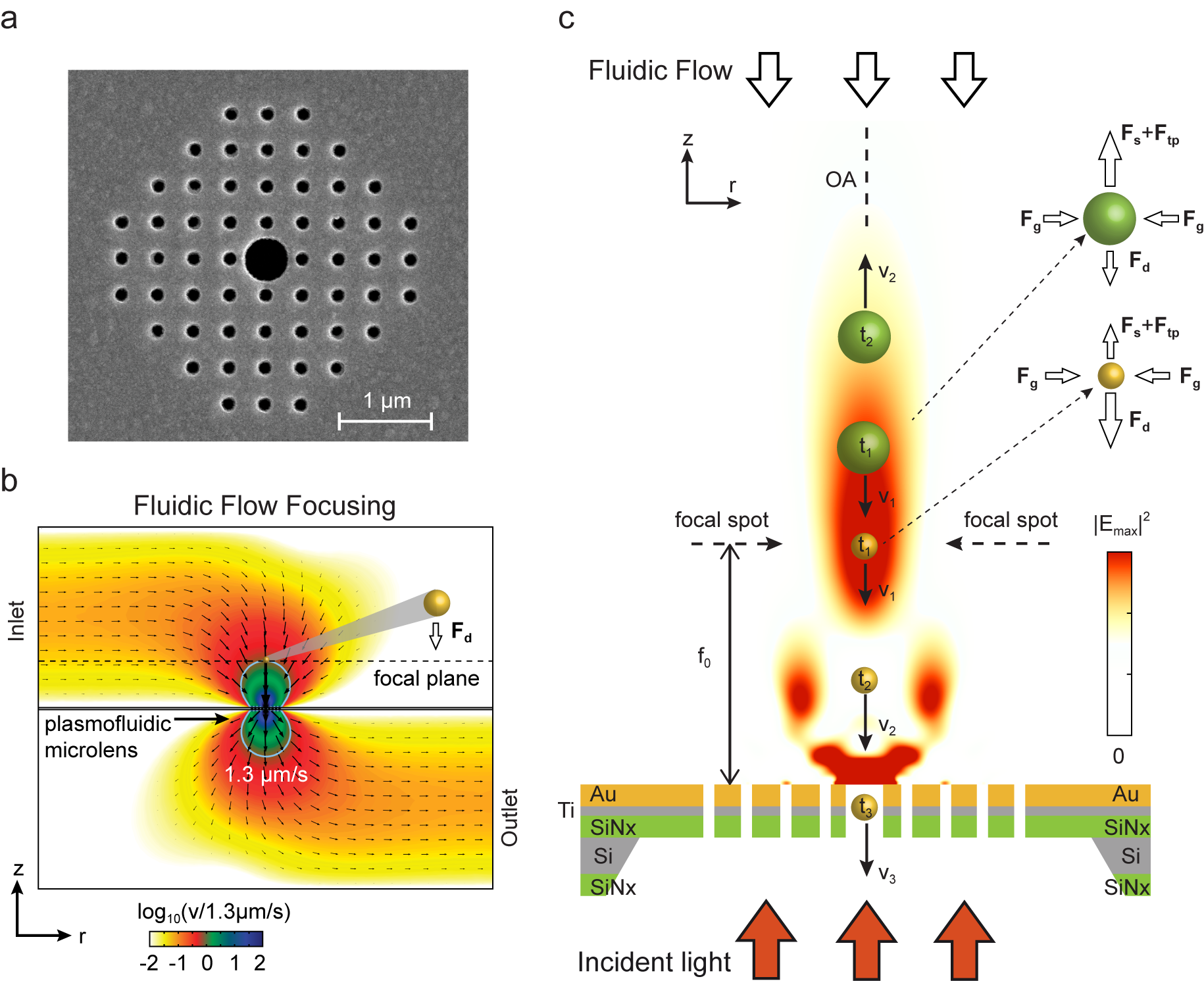Plasmofluidic Microlenses for Exosome Sorting - Published in Scientific Reports
Plasmofluidic Microlenses for Label-Free Optical Sorting of Exosomes
Pumping system controlled by a microcontroller connected to the microfluidic chip is shown.
Article | OPEN | Published: 13 June 2019
Xiangchao Zhu, Ahmet Cicek, Yixiang Li & Ahmet Ali Yanik
Scientific Reports 9, Article number: 8593 (2019) | Download Citation
Abstract
Optical chromatography is a powerful optofluidic technique enabling label-free fractionation of microscopic bioparticles from heterogenous mixtures. However, sophisticated instrumentation requirements for precise alignment of optical scattering and fluidic drag forces is a fundamental shortcoming of this technique. Here, we introduce a subwavelength thick (<200 nm) Optofluidic PlasmonIC (OPtIC) microlens that effortlessly achieves objective-free focusing and self-alignment of opposing optical scattering and fluidic drag forces for selective separation of exosome size bioparticles. Our optofluidic microlens provides a self-collimating mechanism for particle trajectories with a spatial dispersion that is inherently minimized by the optical gradient and radial fluidic drag forces working together to align the particles along the optical axis. We demonstrate that this facile platform facilitates complete separation of small size bioparticles (i.e., exosomes) from a heterogenous mixture through negative depletion and provides a robust selective separation capability for same size nanoparticles based on their differences in chemical composition. Unlike existing optical chromatography techniques that require complicated instrumentation (lasers, objectives and precise alignment stages), our OPtIC microlenses with a foot-print of 4 μm × 4 μm open up the possibility of multiplexed and high-throughput sorting of nanoparticles on a chip using low-cost broadband light sources.
Full Article: Plasmofluidic Microlenses for Label-Free Optical Sorting of Exosomes, Scientific Reports, June 2019.
Acknowledgement
A. Yanik acknowledges support from National Science Foundation [ECCS-1611290], Gordon and Betty Moore Foundation [GBMF #5263.06], and National Science Foundation CAREER Award [ECCS- 1847733]. X. Zhu was supported by a University of California Chancellor’s Dissertation Year Fellowship. We acknowledge Dr. Tom Yuzvinsky for assistance with device fabrication and the W.M. Keck Center for Nanoscale Optofluidics for use of the FEI Quanta 3D
